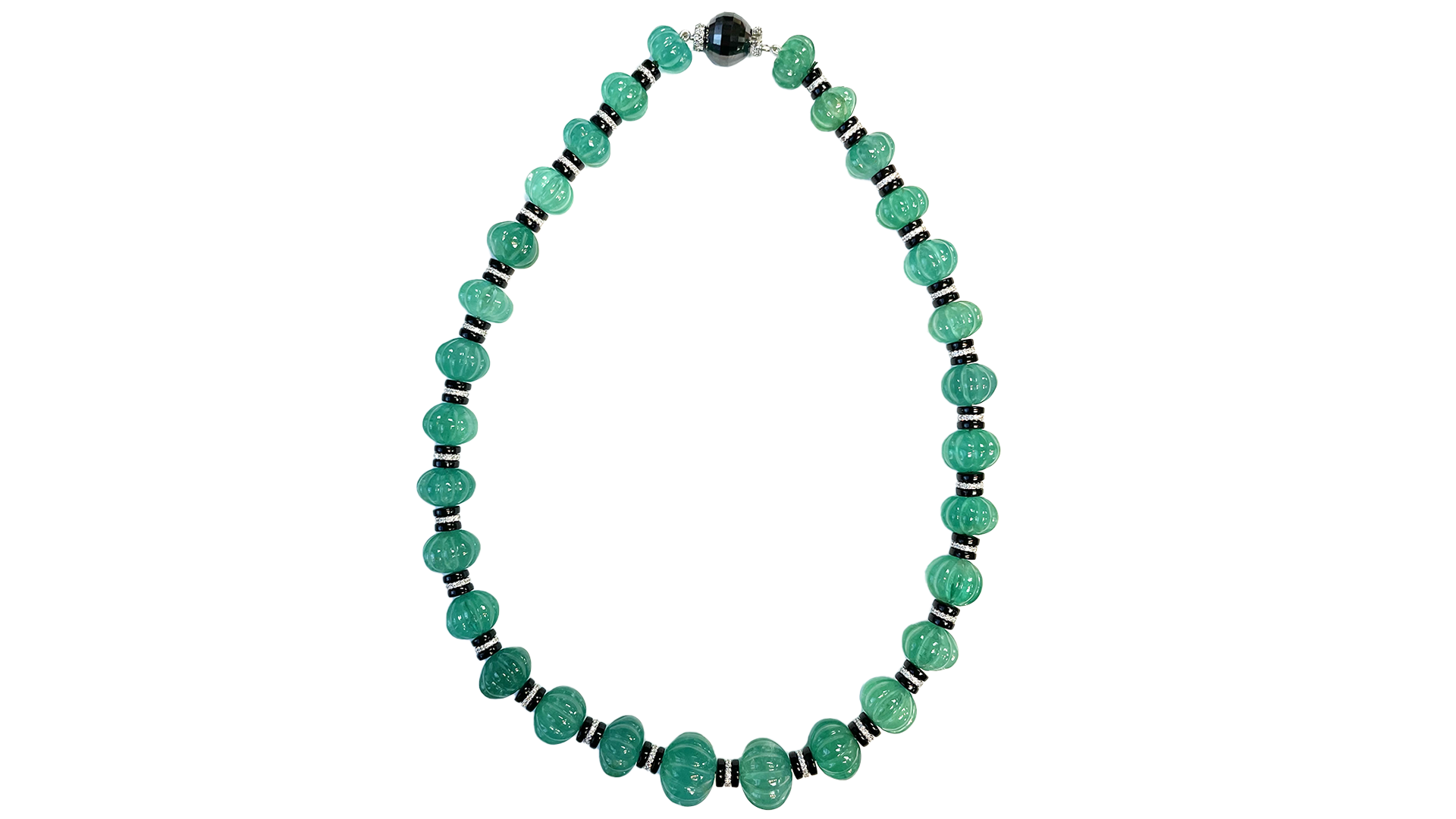Smooth and sensual to the touch, faceted and shimmering in the light or carved with textural details, beads are a beautiful addition to any jewelry wardrobe. Defined as a small piece of material with a hole drilled through it for stringing, beads have been around since the days of the Neanderthals. Beads can be found across all countries, all cultures and all time periods, with a wide range of shapes, sizes and materials used. They have been used as jewelry and money as well as for prayer and meditation.
Early Beads
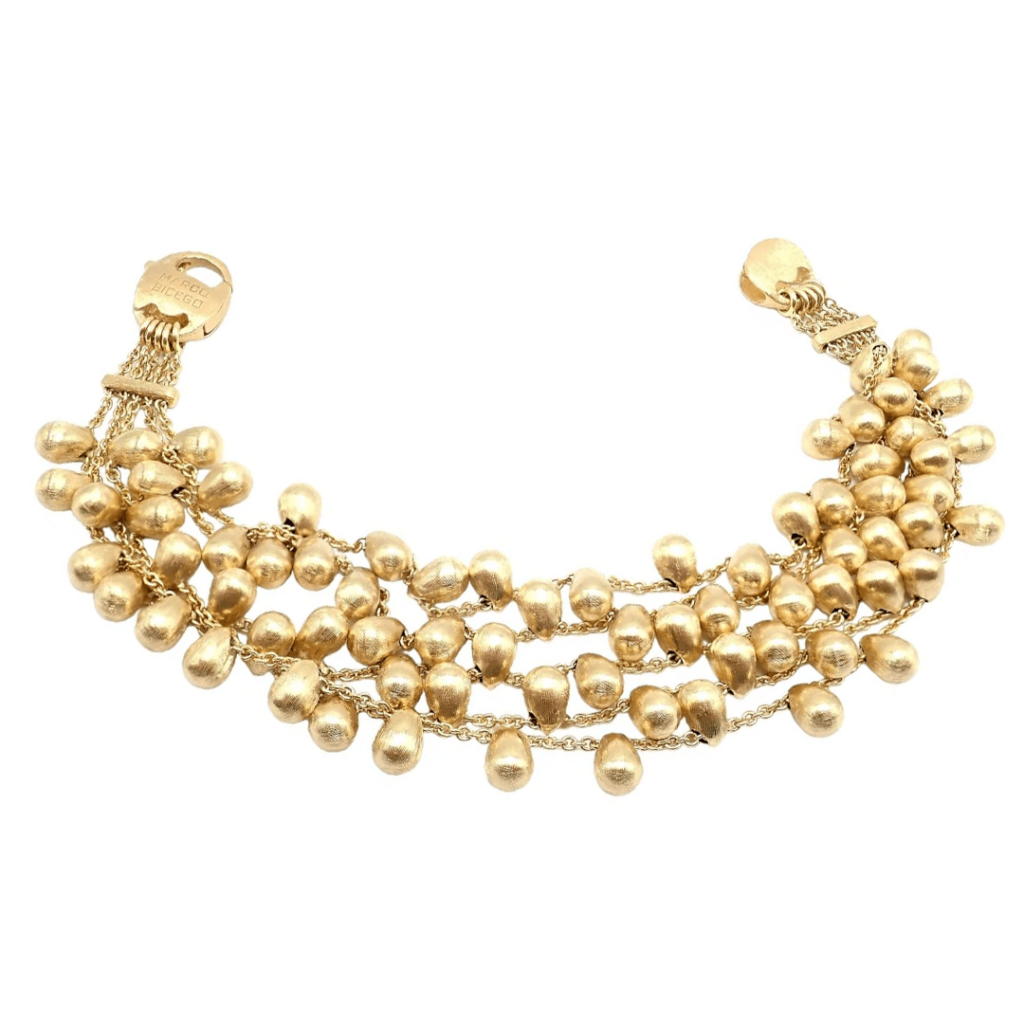
Beads have a long history that dates back 100,000 to 130,000 years ago, when the Neanderthals walked the world, with researchers suggesting that beads are the world’s oldest form of jewelry. Early beads were very simple, shells, bones, or other organic materials such as stone, wood or seeds, with a drill hole were strung on some sort of fiber used as a cord. In the prehistoric and ancient worlds beads were often considered talisman offering protection.
During the Bronze Age, people had developed more tools and were better able to work with metal, turning it into necessary, everyday objects as well as beads and other jewelry items. Drilling holes into stone and metal was also further refined during this time.
The ancient Egyptians were also big into beads. They used faience, a type of ceramic; lapis lazuli, carnelian, turquoise, quartz and glass to create jewelry that has been found in the tombs of the Pharaohs. Beads were worn to show status and wealth as well as for their protective powers. The Egyptians also used beads as offerings to the Gods.
Beads as Money
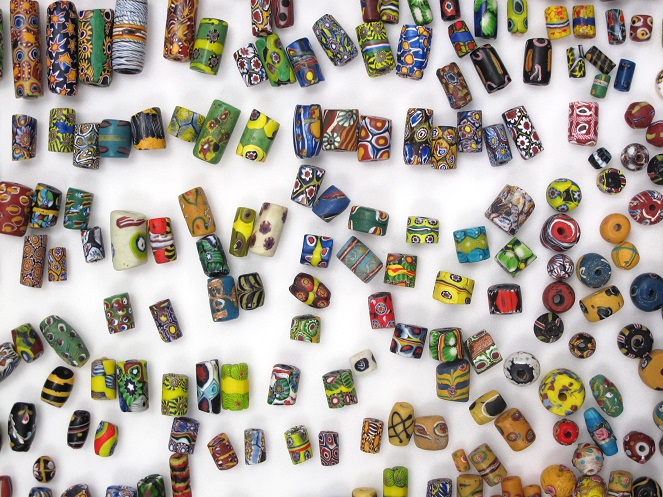
Beads were also used as money. In Africa, colorful trading beads were used to buy crops, goods and services as well as for ritual and storytelling purposes. Trading beads, generally made from glass, metal, wood or clay, with each material and color having its own meaning, connected tribes to each other. They were also worn to show status and identity, such as belonging to a specific tribe. During the 1970s counter culture movement, it was very stylish to wear an African trading bead on a leather cord around the neck.
In North America, beads, often made from glass, gold, jade, horn, bone, turquoise or shell, were an important part of Native American culture. Each tribe has its own specific symbolism, style and beading technique, with the commonality that beads were used in ritual ceremonies, art and storytelling.
Murano Beads
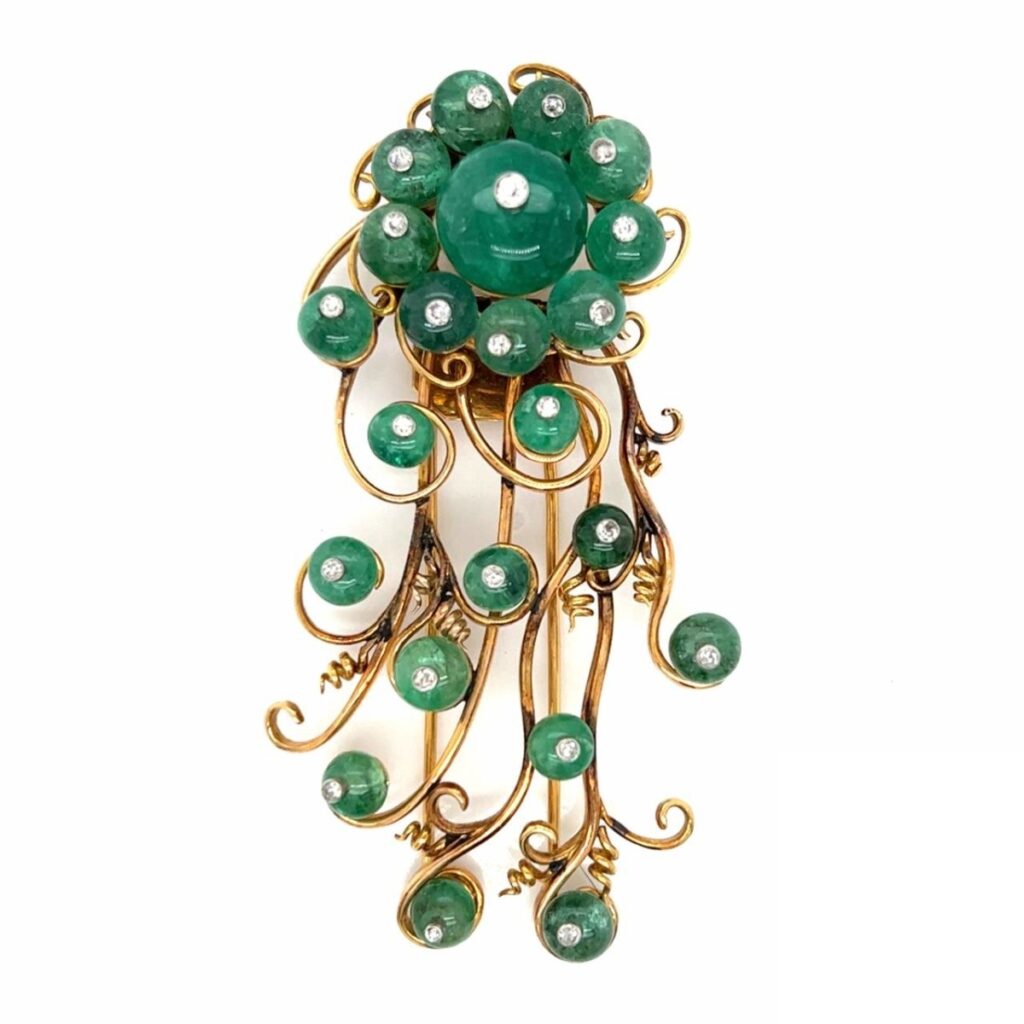
The Middle Ages ushered in a new chapter for beads. Venice, Italy was a major producer of glass beads during the 1400s. The industry was so vast, that the leaders of Venice were concerned that the fire from the glass kilns would explode and burn down the city, so the glassmakers were moved to a nearby island, Murano, starting the tradition of Murano glass.
The Murano glass factories were so busy producing beads that they tapped into the artisans from Bohemia (now Czechoslovakia ) to help keep up with the demand. These glass artisans took their new knowledge back to their homeland and started a flourishing bead production industry there.
Many of these Murano glass beads made their way around the world as European explorers set out to find new lands. They took beads with them to give as gifts and to trade for goods and services. Explorers Lewis and Clark took beads on their expedition to the Louisiana territories as gifts and to use as currency for trade.
Beads were not used only for trade and adornment, they were also used in spiritual practices. In Europe, monks used rosary beads to count prayers, while on the other side of the world in Asia, Hindu and Buddhist monks were using beads during their meditations. In fact, the word bead derives from the old English word “bedu” which means prayer.
Modern Beads
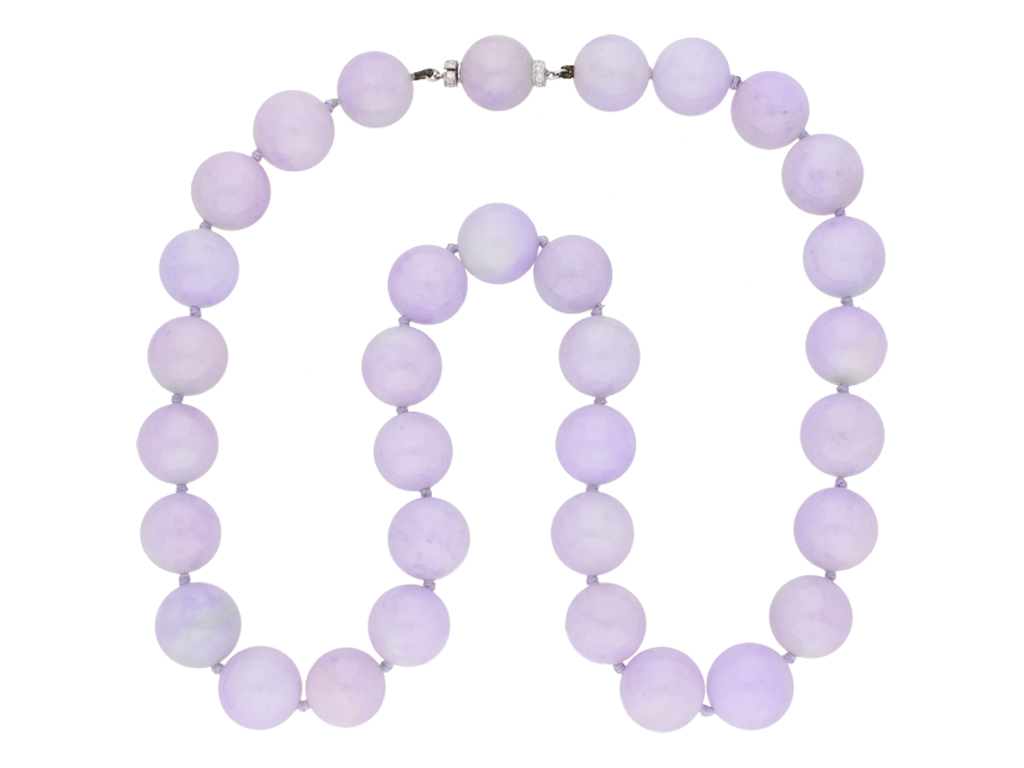
By the middle ages, gemstones and metals were used to make beads worn by the royals and upper echelons of society to show wealth and luxury. Gems were formed into smooth cabochon, faceted or carved beads, which were used in jewelry, a trend that continues. Beads were popular in the 1920s worn long and swingy sometimes with a beaded tassel, changing lengths to keep up with fashion over the next several decades.
During the 1990s and early aughts, bead jewelry proliferated, long lariats, chokers, bead bracelets with charms, earrings, even rings featured beads. Designers were making colorful bead jewels in all one hue, or mixing colors and gems for unique pieces that could be glamorous, dramatic or playful. Beautifully versatile, beads are a fun way to wear color and to add a touch of luxe, or a dash of playfulness to whatever you may be wearing.
Top of Page: Carved emerald beads with a total weight of 405.25-carats, black onyx and diamond rondelles, black diamond and white gold necklace, courtesy Jardin Jewels (@jardinjewels).
Authored by Amber Michelle
